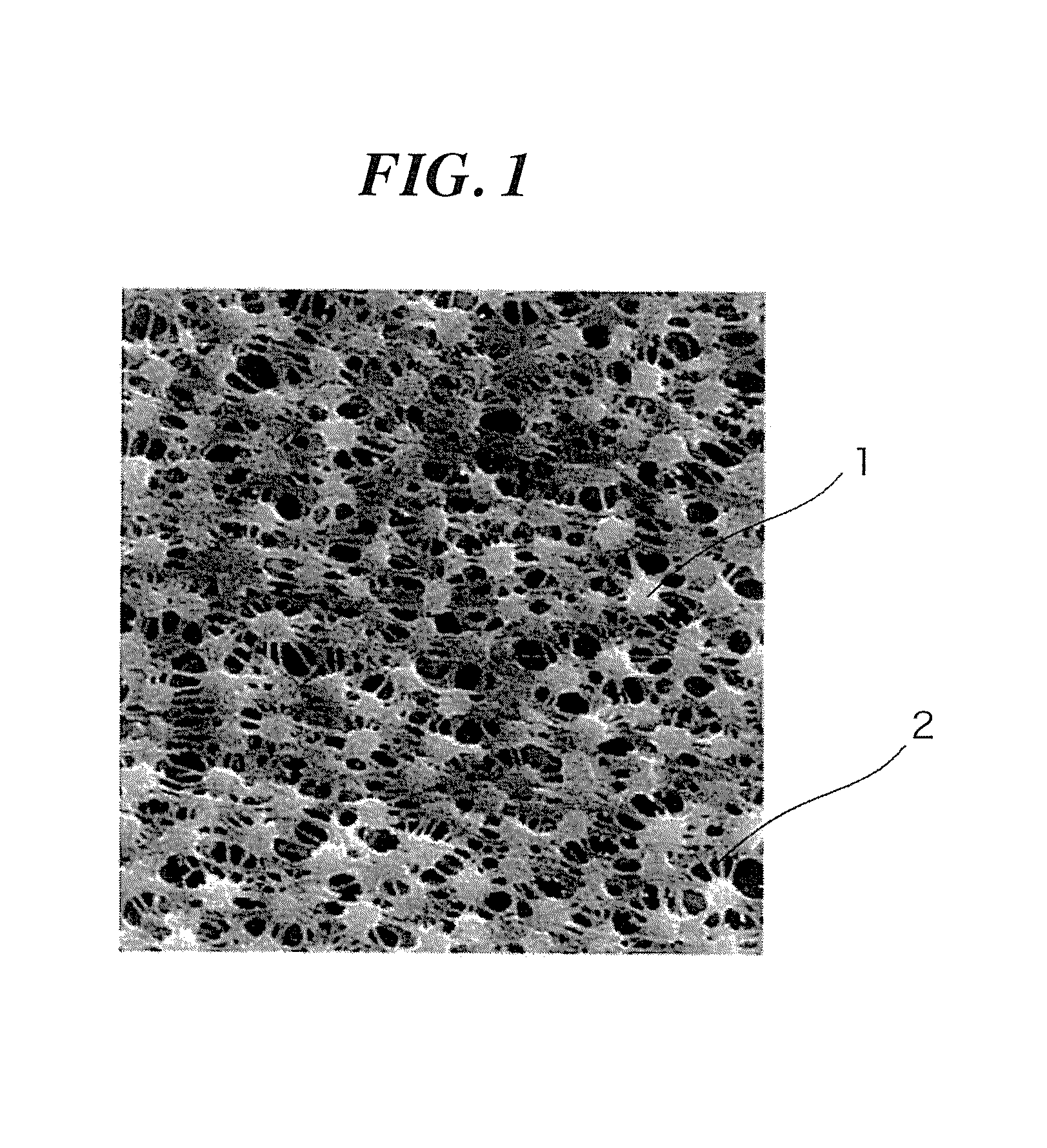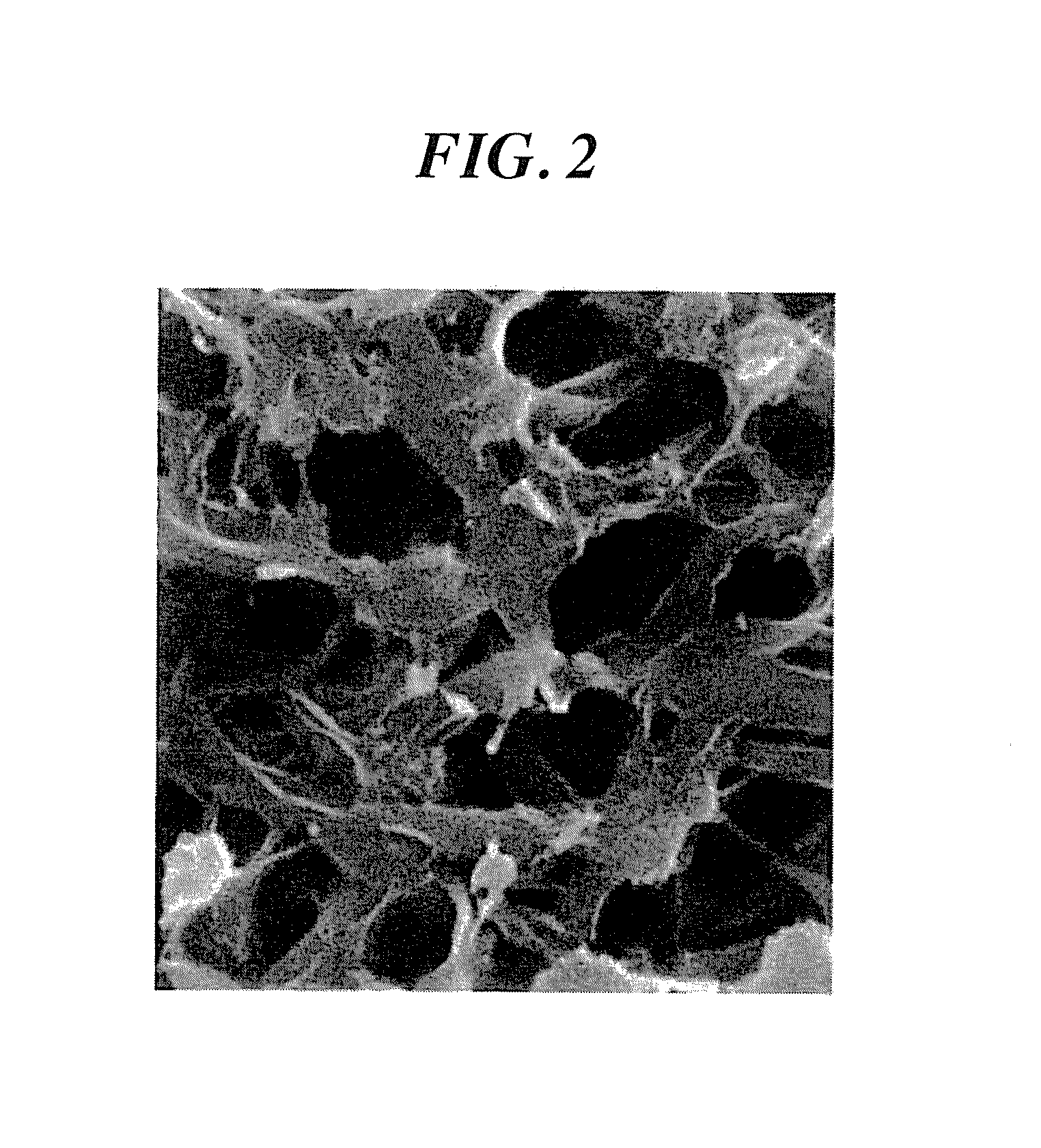Microporous membrane and manufacturing process therefor
a technology of microporous membrane and manufacturing process, which is applied in the direction of membranes, separation processes, filtration separation, etc., can solve the problems of insufficient pores, less likely to be processed into microporous membranes, and inability to achieve high permeability (liquid permeability and the like) and achieves the effect of maintaining the particle rejection rate and permeability
- Summary
- Abstract
- Description
- Claims
- Application Information
AI Technical Summary
Benefits of technology
Problems solved by technology
Method used
Image
Examples
example 1
Step of Preparing Raw Material Solution
[0125]10 parts by weight of polyvinylidene fluoride “Kynar HSV900” (weight-average molecular weight 800,000) and 10 parts by weight of polyethylene glycol were mixed to 80 parts by weight of dimethylacetamide, and were dissolved at 90° C. The solution was returned to ordinary temperature to be a raw material solution.
[0126][Porosity Forming Step]
[0127]A spunbond nonwoven fabric manufactured by Unitika Ltd. as a substrate layer was placed on a glass plate, and the raw material solution was applied thereon by a baker applicator at thickness of 250 μm. Immediately after the application, the material above was placed in ultrapure water to form multipores in the membrane. The membrane was washed in ultrapure water exchanged for the fresh one several times, taken out from water, and dried to be a microporous membrane.
example 2
[0128]A microporous membrane was obtained by the same method as Example 1 except that H1007 manufactured by Japan Vilene Company, Ltd., was used for a substrate layer.
example 3
[0129]A microporous membrane was obtained by the same method as Example 2 except that N-methyl-2-pyrrolidone instead of dimethylacetamide was used.
PUM
| Property | Measurement | Unit |
|---|---|---|
| thickness | aaaaa | aaaaa |
| thickness | aaaaa | aaaaa |
| average particle diameter | aaaaa | aaaaa |
Abstract
Description
Claims
Application Information
 Login to View More
Login to View More - R&D
- Intellectual Property
- Life Sciences
- Materials
- Tech Scout
- Unparalleled Data Quality
- Higher Quality Content
- 60% Fewer Hallucinations
Browse by: Latest US Patents, China's latest patents, Technical Efficacy Thesaurus, Application Domain, Technology Topic, Popular Technical Reports.
© 2025 PatSnap. All rights reserved.Legal|Privacy policy|Modern Slavery Act Transparency Statement|Sitemap|About US| Contact US: help@patsnap.com



